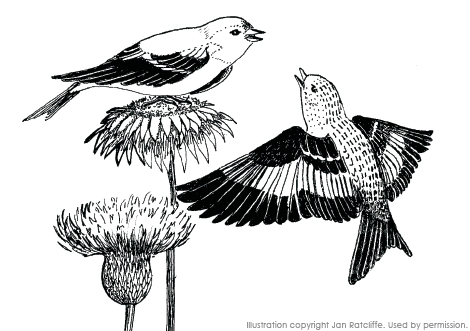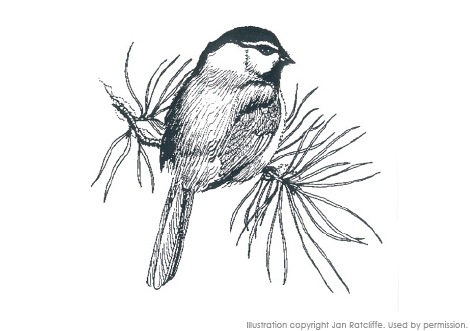The Board of PLAN Jeffco has opposed the proposed W 470 – Jefferson Parkway/Tollway primarily because of the potential for releasing plutonium contaminated soils, increased traffic on Hwy 93, increasing development in sensitive scenic areas and because traffic studies have continually shown that the Parkway would not alleviate traffic problems east of the proposed road nor would a toll road be financially viable in the long term. PLAN Jeffco has worked for years to support the preservation of the natural areas on Rocky Flats – Section 16 and the mountain backdrop and foreground are part of an ecosystem and wildlife migration route. As the years have passed, inadequate potential use of the toll way has continued to be the case as more of the land in the Northwest quadrant was preserved as open space and much of the potential commercially-industrially zoned lands are being developed for housing.
A beltway around Denver was drawn on maps in Washington, D.C. during the Eisenhower Presidency – the start of the Interstate Highway system. In most cases beltways do make sense, but when geography interferes they may not be practical. Cities adjacent to mountain ranges, lakes or oceans have developed close to those features leaving little or no room for the space required by a freeway. PLAN Jeffco participated in the Denver Regional Council of Government, (DRCOG) studies relating to Governor Lamm’s putting a “silver stake” through building C-470 to interstate standards. The funds saved were used to improve Santa Fe Drive from I-25 to C-470.
When W-470 was proposed with a small tax on each property each year, PLAN Jeffco attended many meetings, but did not participate in the election that defeated the proposal. As studies were conducted in the late 1990’s and 2000’s PLAN Jeffco was not surprised that estimated traffic counts continued to not justify such a route. This did not stop proponents of the Parkway as some wanted it to reduce the traffic on Wadsworth (the traffic studies showed the reduction would be minimal) and others wanted it to support commercial development along the route (only area left on the Parkway route is along Highway 72 between Indiana and Highway 93 and much of that has been rezoned residential.)
During the legislative process for designation of the former Rocky Flats nuclear facility to become a National Wildlife Refuge, the Parkway Authority lobbied to have a portion of the Rocky Flats site disposed of for transportation purposes so, it could construct a toll way. The bill authorizing transfer to the Fish and Wildlife Service for refuge purposes included permission for the sale of a 300-foot strip on the West side of Indiana Street for right-of-way.
Both Boulder County and Boulder City Governments for a long time had been opponents of the Parkway, because of the potential for additional development along Highway 93. They have made three expensive acquisitions along Highway 93 North of Highway 72. Jefferson County Open Space (JCOS) has had an agreement with Lafarge to not exercise their mining lease on most of the state owned Section 16, just North of the Northeast corner of Highways 72 and 93. Section 16 and portions of the lands on the West side of Rocky Flats are home to relic Front Range Tall Grass Prairie. Less was spent on the Rocky Flats remediation than was appropriated, and some of these, Natural Resources Damages funds, were made available for land and mineral right acquisitions in the area.
After considerable negotiation, a complex agreement was reached and Boulder City and County dropped its opposition to the Parkway. The financial contributions were to be:
Parkway Authority: $2.8 Million, the appraised value of the right-of-way,
Natural Resources Damages funds: $3.3 million
JCOS: $5 million
Boulder City: $2 million
Boulder County: $2 million
Jefferson County: $ 0.1 million (CTF)
Other sources: $ 0.3 million
In exchange:
The Parkway Authority would get the right-of-way
The State Land Board would be paid $9.4 million for Section 16 surface and mineral rights
Lafarge would be paid $3.3 million to terminate their extraction leases on Sections 4 and 16.
$2.8 million would go to the to McKays for the mineral rights on Section 9 that would be transferred to the Fish and Wildlife Service
The Rocky Flats Refuge would obtain Section 16 surface and mineral rights.
The Refuge would gain the mineral rights to1200 acres, which would allow including these acres within the Refuge.
This agreement left PLAN Jeffco’s Board with a dilemma. Conservation of Section 16 and the other land adjacent to the refuge had been high on our conservation list for many years and this agreement might be the last chance to achieve their preservation. But the price was removing another hurdle for the Parkway. The Board chose not to take a formal position, however, we did actively participate in the NEPA process and seriously questioned the lack of analyses in the Environmental Assessment and absence of an Environmental Impact Statement. Some of the information included in the final decision documents and relied on by the plaintiff’s in their legal challenges was included because of PLAN Jeffco’s efforts.
The original agreement was for the property transfers to close in the summer of 2012. The Town of Superior, City of Golden, and two environmental organizations brought suit taking the position that the Fish and Wildlife Service’s environmental review was not adequate and ignored the potential plutonium contamination, impact on wildlife, and the impacts of the traffic. The closing dates for the property transfers were moved, to by December 31, 2012.
The Federal District court ruled against Golden, Superior and the environmental plaintiffs on December 21, 2012. On December 24th the all the plaintiffs, except Golden, petitioned the 10th Circuit Court of Appeals for an injunction preventing the land transfers and appealed the District Court decision. The injunction was granted on December 26th. However, on December 28th the Appellate Court set the injunction aside. The closings, listed above, took place on December 31st. The Town of Superior and the two environmental organizations’ appeal briefs are due on February 19, 2013.





